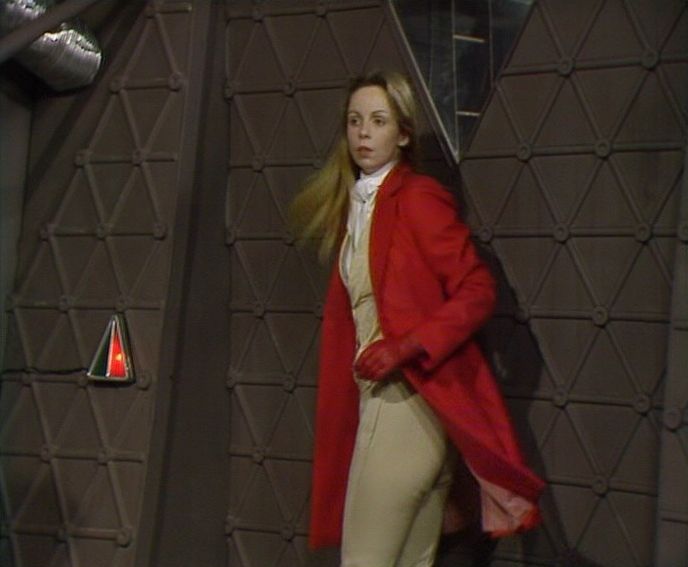
The Nimon’s hyperspace portal has transported Romana to the Crinoth (the previous planet occupied by the Nimons) where she meets Sezom (John Bailey). Bailey adds an instant touch of class to proceedings: after some of the exuberant performances seen during the last few episodes he essays something which was much more subtle and grounded in reality
Needless to say, after what we’ve witnessed recently it’s somewhat jarring to have a decent spot of acting but never mind, this first scene brings into sharp focus the Nimon’s planet hopping and destructive capabilities. Sezom, like Soldeed, foolishly believed the Nimon’s promises.
SEZOM: But I have caused the deaths of so many others. The total destruction of our planet and all its people. I am to blame.
ROMANA: Why? What did you do?
SEZOM: I allowed the Nimons to come here. I worked for them, became their creature. They promised us technology, peace, prosperity. It ….
ROMANA: Go on.
SEZOM: It seemed so easy. Such a small price.
ROMANA: Did you have to provide them with some sort of tribute?
SEZOM: How did you know that?
ROMANA: I’ve seen something similar.
SEZOM: There was only one of them to start with. I never knew what was to come. I swear, I never knew what was to come. It seemed such a small price to pay.
ROMANA: It always does.
It’s something of an egregious info-dump it has to be said. Romana just happens to stumble straight into the path of someone who can put the final pieces of the plot together, but no matter – at least now we know the fate that awaits Skonnos.
Elsewhere, the Doctor has a friendly chat with the Nimons, which features one of my favourite exchanges of the story.
NIMON 2: Later you will be questioned, tortured and killed.
DOCTOR: Well I hope you get it in the right order.
The other main point of interest is Soldeed’s death scene which has to be seen to be believed. And even then, I don’t quite believe it …
To be fair to Crowden, it does appear that he believed they were only rehearsing rather than going for a take, but as the clock was probably ticking round to 10 pm (when the plugs would be pulled) it presumably was felt to be “good enough”. Which rather sums up the end of season feel of the story (even if Nimon was never intended to finish S17). By this point it seems that time, money and inspiration had rather run dry.
The Horns of Nimon is certainly fun if you’re in the right mood – Tom Baker, Lalla Ward and Graham Crowden are always worth watching – but it also has a definite end of an era feeling. Change was coming and for many it wasn’t a moment too soon.







